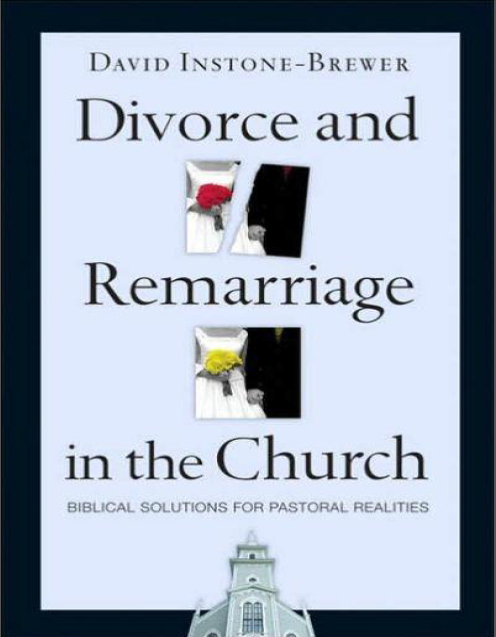Christian Literature
Divorce and Remarriage in the Church
Biblical Solutions for Pastoral Realities
- Category: Christian Literature
- Author: David Instone-Brewer
- Pages: 218
- Price: 0
- Library: Christian Library Nation
- File: Divorce and Remarriage in the Church Biblical Solutions for Pastoral Realities (David Instone-Brewer [Instone-Brewer, David]) (z-lib.org).pdf
Hits: 252
Review
INTRODUCTION
What's New?
So what do you do for a living?" the young man asked me with a barely
stifled yawn. He was trying to sell me a time-share apartment, and I was
trying to get a free holiday without buying anything. I had to pretend to be
interested in his product, and he had to pretend to be interested in me.
"I study the Bible at a research institute in Cambridge."
He looked up suspiciously, as though he had caught me lying: "I thought
they'd have finished studying the Bible by now What else is left for you to
find out?"
I'd like to say that I took the opportunity to present the gospel to him, but
I think I merely assured him that this was indeed what I did for a living and
that there is lots of biblical research left to be done.
It's an unfortunate fact that there are still significant gaps in our
knowledge of the language, culture and archaeology of the Bible. The first
century especially has been less well understood because fewer nonbiblical
documents have survived than from surrounding centuries. At present,
however, our knowledge of the first century is expanding rapidly, because
we are beginning to properly understand the Dead Sea Scrolls and early
rabbinic traditions as well as new scraps of ancient texts that are still being
published.
The findings in this book are based on a multitude of new discoveries and
academic publications by others and by me. The most important of these are
as follows:
• Dead Sea Scroll fragments dealing with divorce, which help us to
understand the other scrolls
• newly discovered Jewish divorce certificates, such as one written by a
Jewish man on Masada in A. D. 72 and one written by a Jewish woman in
about A.D. 125
• more than two hundred Aramaic, Greek and Latin marriage and divorce
papyri, which have been collected together for the first time
• rabbinic evidence that can now be dated to the first century
• publication of hundreds of Samaritan documents, including ancient
marriage contracts
• publication and analysis of all the rabbinic and Karaite marriage and
divorce documents from the Geniza of the Cairo Synagogue
This wealth of new information gives us a much greater understanding of
how people spoke and lived in the first century, and as a result we can read
the New Testament with fresh insight. We are closer than ever before to
understanding what it meant to its very first hearers and readers-and to
understanding what God says to us today

